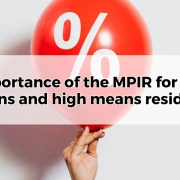How can you navigate the waitlist system for aged care facilities?
Table of Contents
TogglePlanning for aged care can be daunting, especially navigating the waitlist system. This blog post will equip you with the knowledge and tools to navigate the waitlist system effectively. We’ll walk you through the different types of aged care, understand the assessment process, and explore ways to optimise your application.
Remember, while the waitlist presents challenges, it’s not insurmountable. With the right information and support, you can navigate the system confidently and increase your chances of securing the best care for your loved one.
Understanding the Waitlist System
Understanding the different types of aged care and their unique waitlist systems is key to navigating the process effectively. Here’s a breakdown:
Residential Aged Care
Residential Aged Care refers to living in a facility that provides 24/7 care and support. The waitlist is managed nationally through My Aged Care, with priority given to individuals based on assessed needs and urgency.
Home Care Packages
Home Care Packages allows you to stay at home while receiving support services like personal care, meal preparation, and transport. Wait times depend on your assessed needs and package level, and the availability in your chosen region.
Other Options
Consider exploring alternatives like retirement villages, assisted living units, or shared accommodation with in-home care. These might have less waiting time and cater to varying needs.
The My Aged Care Assessment
This crucial step determines your eligibility for government-funded aged care and placement on the waitlist. An Aged Care Assessment Team (ACAT) will visit you to assess your functional abilities, medical needs, and living situation. Be prepared with medical records and information about your desired care level.
Priority Factors
Remember, wait times aren’t solely based on time spent waiting. My Aged Care prioritises individuals based on clinical needs, risk factors, and proximity to preferred facilities. Discuss your needs openly with the ACAT to ensure accurate assessment and optimal placement.
While waitlists can be challenging, understanding the system and prioritising effectively can significantly improve your chances of securing the care you need.
How can you navigate the waitlist system for aged care facilities?
Feeling lost in the waitlist maze? Here are some practical strategies to guide you:
Broaden Your Options
Explore diverse facilities
Don’t limit yourself to one or two options. Research various aged care homes, villages, and home care providers. My Aged Care’s “Find a provider” tool and the Aged Care Guide are valuable resources.
Consider alternatives
Don’t rule out retirement villages, assisted living units, or shared accommodation with in-home care. These options may have shorter wait times and cater to different needs and preferences.
Optimise Your Application
Be prompt and proactive
Respond to requests for information quickly and keep your application details up-to-date. This shows your commitment and ensures accurate assessment.
Seek professional support
Consider consulting an Aged Care Financial Adviser who can assist with navigating the financial aspects of aged care, optimising applications, and understanding waitlist dynamics.
Stay Informed and Proactive
Maintain regular contact
Don’t hesitate to contact waitlisted facilities for updates on your position and available vacancies. Stay engaged and express your continued interest.
Utilise My Aged Care tools
My Aged Care provides waitlist management tools and notifications. Familiarise yourself with these features to stay informed and proactive.
Patience and persistence are key. While the waitlist process can be lengthy, proactive steps can significantly improve your chances of securing the desired care.
Navigating the aged care waitlist can feel overwhelming, but remember, it’s not insurmountable. With the right information, proactive strategies, and the support of valuable resources, you can significantly increase your chances of securing the care your loved one needs.









